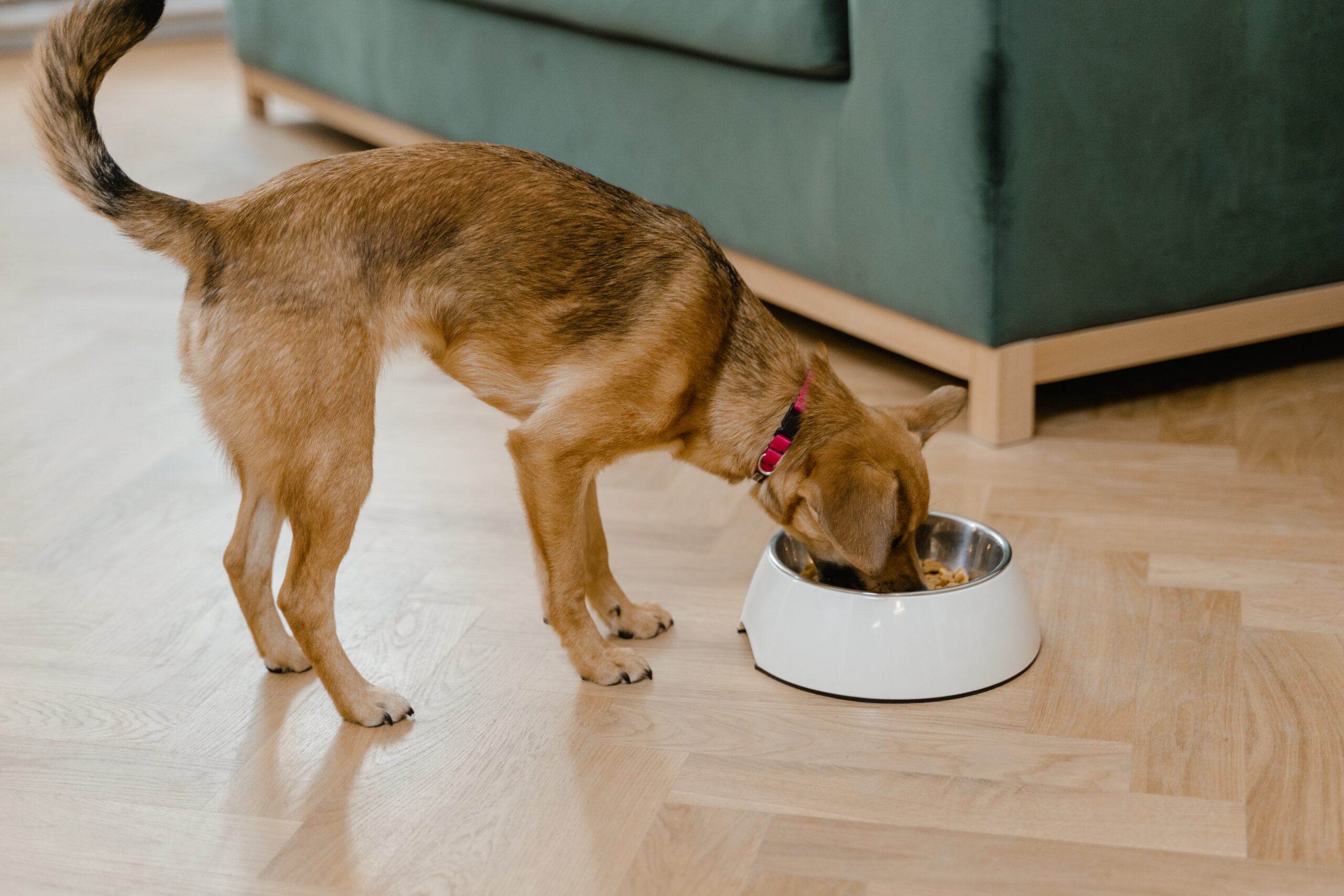Is your furry friend a picky eater?
by Ontario SPCA and Humane Society | Cat Care Dog Care | September 23, 2022

Picky pooches and finicky felines
Picky pooches and finicky felines can be challenging for their human companions when it comes to feeding time. We tend to attach many emotions to eating and we sometimes transfer that to our furry friends by providing lots of treats and occasionally giving them a taste of human food. These behaviours can contribute to our furry friends not eating their own pet food. Here are some ways to manage dealing with a picky eater.
Feeding from the table should be avoided
Keeping your dog away from the table while you are eating is one solution. Many human foods can be unhealthy for companion animals as they may cause digestive issues, weight gain and it can encourage unwanted behaviour such as begging. If your furry friend becomes accustomed to receiving table scraps, they may no longer want to eat their pet food, encouraging picky eating.
Also, make sure that no tempting treats are left out on the counters or table while you aren’t around. Ensure that your kitchen is inaccessible to your furry friend so that they can’t get into anything that could be harmful.
Read our blog about foods that are toxic for pets.
Learn more on how to get your dog to stop eating off the table.
Dogs vs cats
Approaching the dilemma of picky eaters is slightly different in dogs and cats.
Some breeds of dogs may be more predisposed to being picky eaters. Keep in mind, the age and health of your dog or cat may also alter their appetite. Sudden changes in our animal’s environment, absent humans or emotional upheaval can also impact the appetite of your canine or feline companion.
Nutrition resources are available
You want your fur baby getting the best nutrition, but how do you know what and how much to feed them? Consult with your veterinarian first. There are also many resources available for animal nutrition and feeding, including our blog on healthy portion tips for furry friends, here.
Stick to a routine
- Maintain a regular feeding schedule, offering meals at the same time every day
- Give your fur baby 15 to 30 minutes to finish the food
- Refrain from treats or table scraps
At your furry friend’s next feeding time, again, offer the food for 15 to 30 minutes. If they don’t eat their food in that time, remove the bowl. This will help to ensure a consistent feeding schedule while teaching your dog to eat when food is offered. This works best with dry food. If using wet food, make sure to discard the unused food and start fresh at the next feeding.
Provide a safe, quiet eating place
Many cats prefer small frequent meals. A safe, quiet spot to eat undisturbed is ideal for your feline companion to eat comfortably. Choose a location where there is not a lot of noise, foot traffic, or other furry friends who may try to steal the food, as a busy eating location may cause stress for your cat. Stress during mealtime may prevent a cat from eating or cause them to eat too quickly. Some cats may still prefer to have their human family member with them when they eat, so it may be helpful to find a balance between finding a safe quiet space and not being completely isolated.
Variety may be overwhelming
Offering too many tasty options may also cause a companion animal to be finicky. When offering a new type of food, mix it in with their current food and gradually increase the ratio of the old type of food to the new food. It could be beneficial to try a variety of different feeding dish options (such as stainless steel or glass instead of plastic, a plate instead of a bowl, a raised dish, etc.) Using a dish holder or rubber mat under a dish may also help if the food dish is unsteady or sliding around.
In extreme cases, if a picky eater is not consuming enough food, it is suggested to add in a bit of salt-free chicken or vegetable broth, fresh or frozen, water-based vegetables or a dry, scrambled egg. This recommendation applies for both cats and dogs. We suggest checking with your veterinarian before altering your furry companion’s diet.
Make food tasty
For some dogs, warming up wet food in the microwave may make it more enjoyable. Heating food releases more odor and boosting the smell of the food may increase palatability. Ensure that the food is stirred after removing it from the microwave so that there are no hot spots that may injure your furry friend’s mouth. Alternatively, some furry friends prefer cool and frozen food! Adding salt-free chicken or beef broth, clam juice or tuna water over the food may also encourage your dog to eat as well. It is important to ensure that there are no onions or garlic in the broth as these can be toxic to animals. Changing up their food of choice, such as providing wet food when they usually only eat kibble or vice versa, could prompt them to try it. Remember to introduce new foods slowly to avoid upsetting your cat or dog’s digestive system.
In extreme cases, to prevent prolonged lack of appetite which can be dangerous for your furry friend, your veterinarian may prescribe medication to increase your companion’s appetite.
Be vigilant
If your dog or cat’s appetite has suddenly changed, be vigilant. There could be an underlying health issue. Consulting with a veterinarian can rule out any health issues. If your animal is also experiencing vomiting, diarrhea or lethargy, seek veterinary care immediately.
Categories
Testimonial
Dogs only ask for your love and attention
Dogs only ask for your love and attention, nothing else. Thank you for everything you do!
